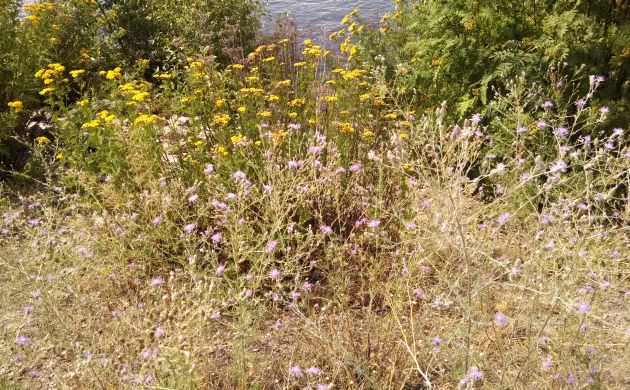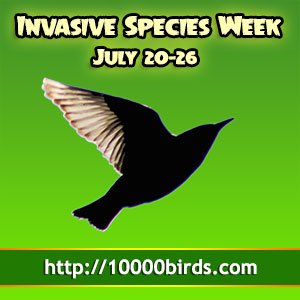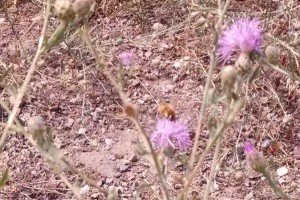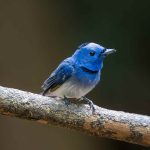
Above: A stand of spotted knapweed along the Clark Fork. The yellow flower behind it is common tansy, another invasive.
It’s bad enough to be an invasive species — the term shows a major fall in public esteem from the days when acclimatization was the rage. But as a descriptor, ‘invasive species’ doesn’t have a patch on ‘noxious weed’. Call something a noxious weed and there’s no doubt where you stand on it. You stand where you can best stamp it out.
The state of Montana is very firm on the subject of spotted knapweed, and the closely related diffuse knapweed and Russian knapweed. They are noxious weeds. (Indeed, some reports take the term ‘noxious’ quite literally, stating that knapweeds exude natural herbicides to discourage competition and can cause irritation to the skin of humans trying to pull them; one rumor gives them the power to induce ‘hand cancer’ if not handled with gloves.) Spotted knapweed arrived in Montana in the 1920s, most likely in a batch of alfalfa seed or perhaps on the creep down from western Canada, where it may have come ashore in the ballast of ships. Since then, it has been pulled and plucked, sprayed and dusted, mowed and set on fire. Thirteen different insects have been introduced into Montana in their turn as biological controls for knapweeds, from weevils that attack the roots to flies that lay eggs in the seed-heads. And yet it persists.
Why is the state of Montana so down on knapweed, which to the eyes of the casual observer is a rather pretty purple flower that livens up roadsides and ditches? The usual reaons, really. Knapweed dominates disturbed soils and form monocultures, displacing native plants. This is a serious matter for grassland birds, like the already-imperiled Sage Grouse, with specific habitat requirements tied to native plants; it also causes problems along rivers and streams in western Montana, where the knapweed’s hardy seeds, capable of surviving in the soil for years and traveling great distances in vehicle undercarriages and digestive systems, readily choke out more delicate germinators and thus contribute to erosion and the degradation of water quality. It’s not a friend to agriculture, either; a 1996 study attributes $14 million dollars in direct losses and $28 million in indirect losses from the Montana economy to the three knapweeds (Hirsch, S. A. and J. A. Leitch. 1996. The impact of knapweed on Montana’s economy. Agricultural Economics Report No. 355). Though sheep and goats will feed on newly-sprouted knapweed in the spring, a pasture dominated by the stuff turns woody in late summer and autumn, leaving little nutrition for grazing animals. Bees, and thus beekeepers, like the stuff fine, but they’re about the only ones who do.
So, a big no on knapweed. But what has this to do with birders? Only this: that vehicles and pants-cuffs can pick up spotted knapweed seeds and disperse them. Yet I rarely see this discussed in articles on birding etiquette and what we as a group can do to help conservation, beyond generic admonishments to stay on-trail. Birders usually think of themselves as on the sides of the native angels in these matters, but I’ll be the first to admit that in younger days I thought nothing of the fact that my plunges into the brush to spot elusive tailfeathers might leave me covered in all sorts of odd seeds, which I’d then pick off myself at leisure on the walk home. Birders are also in an excellent position to report the spread of noxious weeds into new areas. In short, it behooves anyone who is going to be tramping about in nature to gain at least a passing familiarity with the invasive and noxious weeds of their area (your state’s Cooperative Extension is likely to have educational materials on the subject – see the nearest land grant university for details.)
Photos by me, for once. Spotted knapweed doesn’t fly away!
…
 Here at 10,000 Birds 20 July – 26 July is Invasive Species Week. We use the term “Invasive Species” in the broadest sense, to encompass those invasive species that have expanded beyond their historical ranges under their own power, by deliberate introduction, or by unintentional introduction. The sheer number of species that have been shuffled around on our big earth is impressive, though we will be dealing with the smaller sample size of invasive avians and other invasives that effect avians. Nonetheless, this week will be chock full of invasive species. So batten down the hatches, strap on your helmet, and prepare to be invaded! To access the entire week’s worth of content just click here.
Here at 10,000 Birds 20 July – 26 July is Invasive Species Week. We use the term “Invasive Species” in the broadest sense, to encompass those invasive species that have expanded beyond their historical ranges under their own power, by deliberate introduction, or by unintentional introduction. The sheer number of species that have been shuffled around on our big earth is impressive, though we will be dealing with the smaller sample size of invasive avians and other invasives that effect avians. Nonetheless, this week will be chock full of invasive species. So batten down the hatches, strap on your helmet, and prepare to be invaded! To access the entire week’s worth of content just click here.














Gives a whole new meaning to a birder’s “stomping ground”.